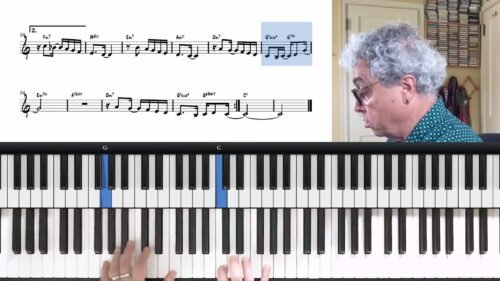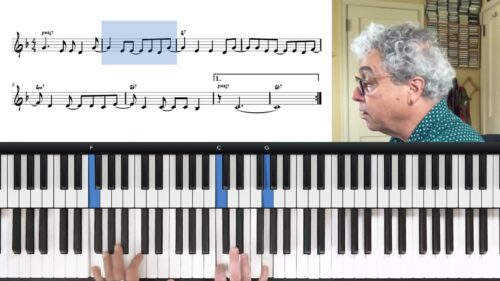Só Em Teus Braços Tutorial
In this lesson we will discuss the tune “Só Em Teus Braços” by Jobim. This lesser known tune predates the Bossa Nova but displays all the characteristic elements of the style.
Internal Motion within the Chords
We will explore the idea of “Thumb lines”. Bossa Nova music contains lots of built in harmonic movements within the chords which can often be played with the thumb.
The chords don’t just stay with the root notes in the bass, changing notes within the chord itself create countermelodies and counterpoint to the main melody of the tune. This internal motion is a well-kept secret to correctly playing the music of Jobim.
Ambivalence of the Minor 6 Chord
The minor 6 chord is a crucial element of Jobim’s sound. Each minor 6 chord can also be understood as a dominant 7 chord a fourth above. This sound containing both light and darkness is integral in creating the sonic landscape of Bossa Nova music. These chords should sound more open than a regular minor 7 chord and allow for a lot of freedom in the interpretation.
Practice Tips
-
Experiment with the "thumb lines" and incorporate moving lines into the voices of the chords. You can use this to create countermelodies to the regular melody of the tune or to add additional interest to sections of rest in the melody.
-
Become familiar with the minor 6 sound. This sound is typical for Brazilian music and often uses a major 7 instead of a minor 7 in its extensions. It can also be seen as a dominant 7 chord a fourth above the root.
-
Practice the chords and the melody separately. Try to establish a solid groove within your chordal playing and integrate these ideas of internal motion. Then add the melody once you feel comfortable with the chords.






